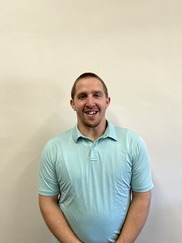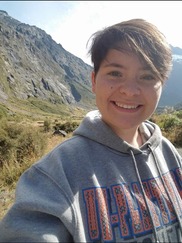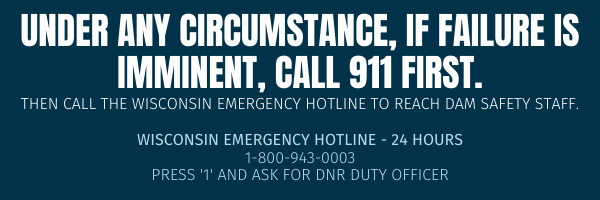|
June 28, 2024
If you are a community stakeholder who could be affected by a dam failure and/or flooding induced by dam discharge operations, consider attending the upcoming Community Dam Safety, Preparedness and Mitigation Course, which FEMA will provide free of charge.
This two-day course will focus on community resilience. It will start by explaining the purposes and basic components of dams. It will then detail the importance of emergency action planning (EAP), steps in an effective EAP process, how to develop an evacuation plan and the importance of EAP exercises. It will provide information on emergency response and effective monitoring for emergencies. And it will also explain how to identify failure risk in the community, consequences of dam failure and effective risk communication.
The target audience is dam owners, dam operators, emergency responders, emergency planners and managers, land use and transportation planners, community leaders and other members of the community. Attendees can claim 14 hours of in-person classroom instruction for CEU requirements.
Event Details
What: L2455 Course: Two-Day Community Dam Safety, Preparedness and Mitigation
Where: Waukesha County EOC, 1621 Woodburn Rd, Waukesha, WI 53188
When: Aug. 13-14, 2024, 8:30 a.m. – 2:30 p.m.
Registration: To register for this course, visit the Wisconsin Division of Emergency Management Training Portal. The training has no cost, but lodging, meals and travel are not provided as part of the training.
More details about the course, registration and other helpful information can be found in the Course Flyer. You can also contact Peter Jensen with questions at P.Jensen@eagleweather.com or 414-791-5751.
|
|
|
An updated Emergency Action Plan (EAP) template and associated guidebook are now available. Both can be found on the DNR Dam Safety Emergency Action Plan webpage. They are resources available for dam owners to save both time and money.
The EAP is a document required under Wis. Admin. Code, Ch. NR 335.07 for all new and existing dams that meet large dam criteria or pose a threat to life or property. The EAP identifies potential emergency conditions at a dam and prescribes procedures to be followed to reduce the likelihood of the loss of life and minimize property damage. It identifies parties involved in responding to a dam emergency, specifies each party’s responsibilities and outlines the lines of communication for different levels of response based on the incident severity.
The guidebook provides a dam owner with a standard process for developing an EAP. The planning process is broken down into a series of steps. Each step includes an explanation of the documents, why they are required and a checklist of action items.
The last update to the template and guidebook was in 2019. Some key changes to the documents include the following:
- Additional details to note in the EAP, including utilities within or on the dam; affected properties and/or critical infrastructure; poor road conditions or access routes during winter, flooding or muddy conditions.
- Additional observations of potential incidents are included in the table “Guidance for Determining the Emergency Level.”
- Reordering of the document to improve readability.
- Additional guidance on who signs the concurrence page.
The dam owner is responsible for ensuring the EAP is prepared and kept updated. This requires coordination between the dam owner, emergency managers, local law enforcement, state and federal regulators, other dam owners, local elected officials and in some cases, the public.
It is best to review the EAP annually to ensure that all information in the plan is still current. It is a good time to update the EAP – and use this new template and guidebook – if contacts need to be updated, there are physical changes to the dam or updated information about the dam (e.g., hydraulic shadow map) or any changes to roles and responsibilities.
If you need an editable template, please request one from your DNR Regional Water Management Engineer or email DNRDamsafamSafety@wisconsin.gov. The DNR also accepts comments on the template and guidebook to consider incorporating into future revisions.
|
|
|
The DNR Dam Safety & Floodplain Program is pleased to announce that Jon Wagner, Avery Fluet, Haley Jahnel and Ben Koch recently joined our team as Regional Water Management Engineers (WMEs). Jon works out of the DNR Fitchburg Service Center, Avery and Haley work out of the DNR Baraboo Regional Office and Ben works out of the Eau Claire Service Center.
Regional WMEs are your local contacts regarding technical questions on dams and floodplain studies, and they also assist with floodplain management. A complete list of the WMEs by county including telephone numbers, email addresses and mailing addresses can be found on the DNR website.

Jon Wagner: South Central Region
Hi, I’m Jon Wagner! I graduated from the University of Wisconsin-Platteville with a Bachelor of Science in environmental engineering. Before my time with the DNR, I had the pleasure of working as an intern for Oneida Engineering Solutions. I am also currently serving as a member of the Wisconsin Army National Guard as an Engineer Officer. In my free time, I play rugby at the Wisconsin Rugby Club in the area and volunteer with Dane County Humane Society. I live in Madison with my partner Molly and our two dogs Finn and Milton.
|

Avery Fluet: West Central Region
Hello! My name is Avery Fluet and I am a graduate of the University of Wisconsin-Platteville with a degree in environmental engineering. I spent several years working in private consulting doing civil and stormwater design before coming to the DNR. Some experience from internships includes land surveying, sanitary and storm sewer inspections and reviewing submitted inspection data for quality control. In my free time, I love to play Dungeons and Dragons with my church group, try new restaurants with my wife Sammy and work Sundays at Misty Mountain Games in Madison (come say hello!). My favorite outdoor activities are kayaking, fishing and golfing. It is an incredible honor to be working with an amazing team and I am excited for a lifelong career with the Waterways Program here at the DNR.
|

Haley Jahnel: West Central Region
I graduated from the University of Wisconsin-Platteville in 2020 with an environmental engineering degree. I have lived in Appleton most of my life, but I moved to Madison in 2021 for work and then to Edgerton when I bought a house. I live with my partner, Kyle, and our two cats Kiri and Stinky. In my downtime, I enjoy weight training, reading, cross stitching, crocheting, playing videogames and boardgames, and volunteering at the Humane Society of Southern Wisconsin.
|

Ben Koch: West Central Region
Hello all! I am originally from Wausau and currently living in Medford. I attended the University of Wisconsin-Madison, earning a civil engineering degree. I then took a little bit of a left turn, following a passion for youth development and education – this included leading international adventure trips for teenagers and environmental education programs for schools. This led me to pursue a Masters in outdoor education and I spent the last 10 years working with teenagers struggling with mental health. I am excited to return to my engineering roots, joining the Waterways program as a water resources engineer. I will be based in the Eau Claire office and look forward to meeting and working with you in the coming years.
Outside of work, I enjoy spending time with my wife Amy, our two kids and our dog and cat. I am an avid paddler, enjoying both whitewater canoeing and kayaking, and I am working on turning my kids into campers and backpackers. I also greatly enjoy eating, both exploring what I can cook myself as well as the many restaurants and cuisines of places I visit. I am excited to join the DNR team.
|

The DNR Dam Safety & Floodplain Program is pleased to announce that Mia Van Horn has accepted the position of floodplain ordinance and communications expert and started in her new role on June 3. If you’ve worked on floodplain issues, especially an update or amendment to your floodplain zoning ordinance, Mia’s name may sound familiar. In this new role, Mia will provide a strong focus on managing statewide review and approval of local community ordinance adoptions and implementing education, outreach and training deliverables in support of federal grant responsibilities.
Mia Van Horn has been with the Floodplain Management Program for the past 5-1/2 years and at the DNR since 2012. Mia currently coordinates and reviews floodplain zoning ordinances. She also assists Wisconsin communities in joining the National Flood Insurance Program, ordinance interpretation, technical assistance and education.
Previous to her floodplain work, she worked for the Dam Safety Program, writing Emergency Action Plans and Inspection Operation and Maintenance Plans for DNR-owned dams and also worked in the DNR Wildlife and Natural Heritage Conservation Programs.
Before her return to Wisconsin, she spent 8 years in Florida working for The Nature Conservancy and the South Florida Water Management District. Mia holds a Masters of Science degree in ecology from the University of Missouri-Columbia and a Bachelor of Science degree in Wildlife and Natural Resource Management from the University of Wisconsin-Stevens Point.
Mia enjoys spending time with her family (especially her new grandson), gardening and warm weather. She enjoys serving in her new role in the program!
|
|
|
 "Dam Safety News" is published by the Wisconsin DNR's Waterways Bureau. Its purpose is to inform dam owners, operators and others concerned about dam safety issues. Comments or contributions are welcome.
This newsletter is supported by funding through FEMA National Dam Safety Grant No. EMC-2023-GR-05008 as part of the National Dam Safety Program. The contents do not necessarily reflect the views and policies of the Federal government.
|
|
|
|
|